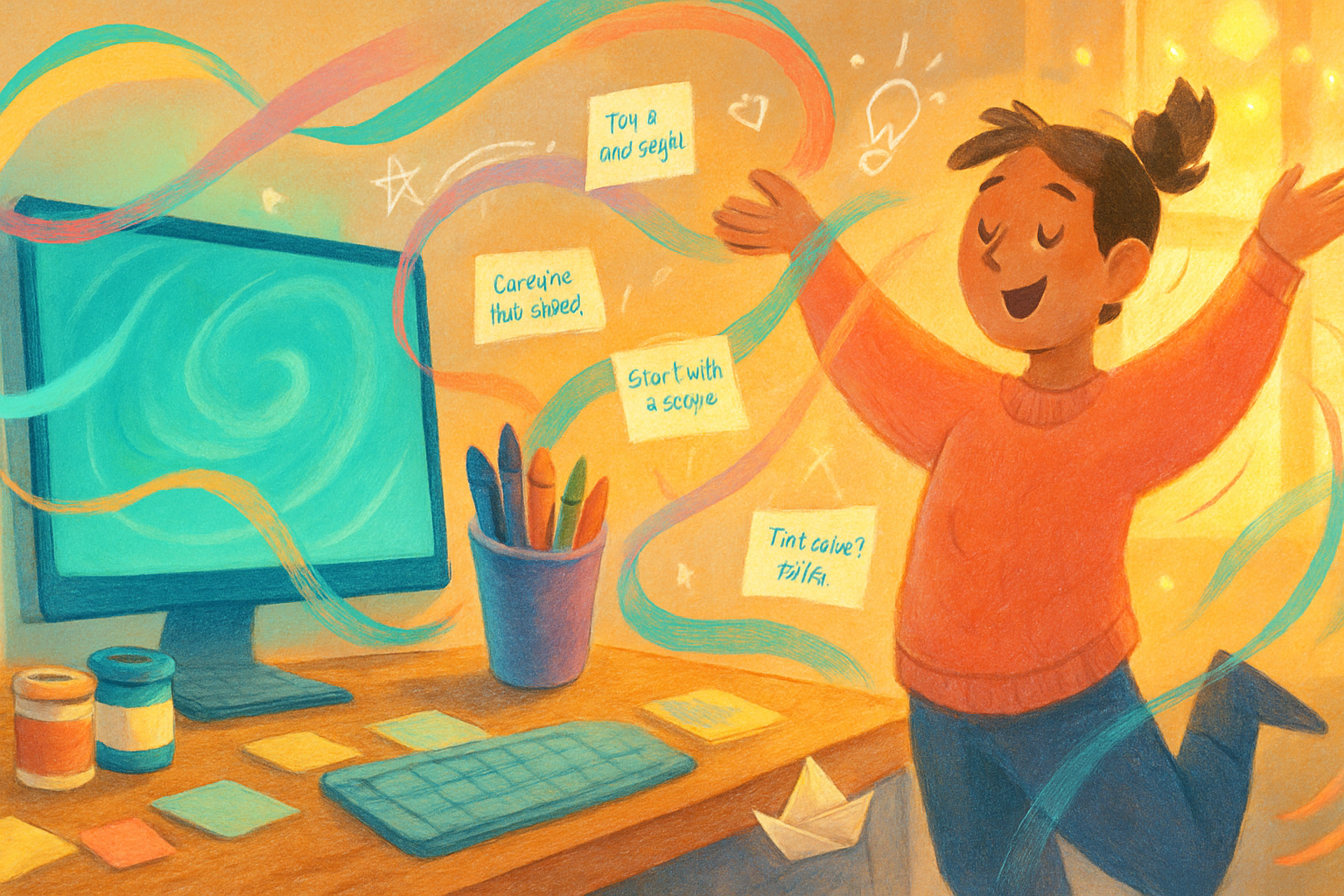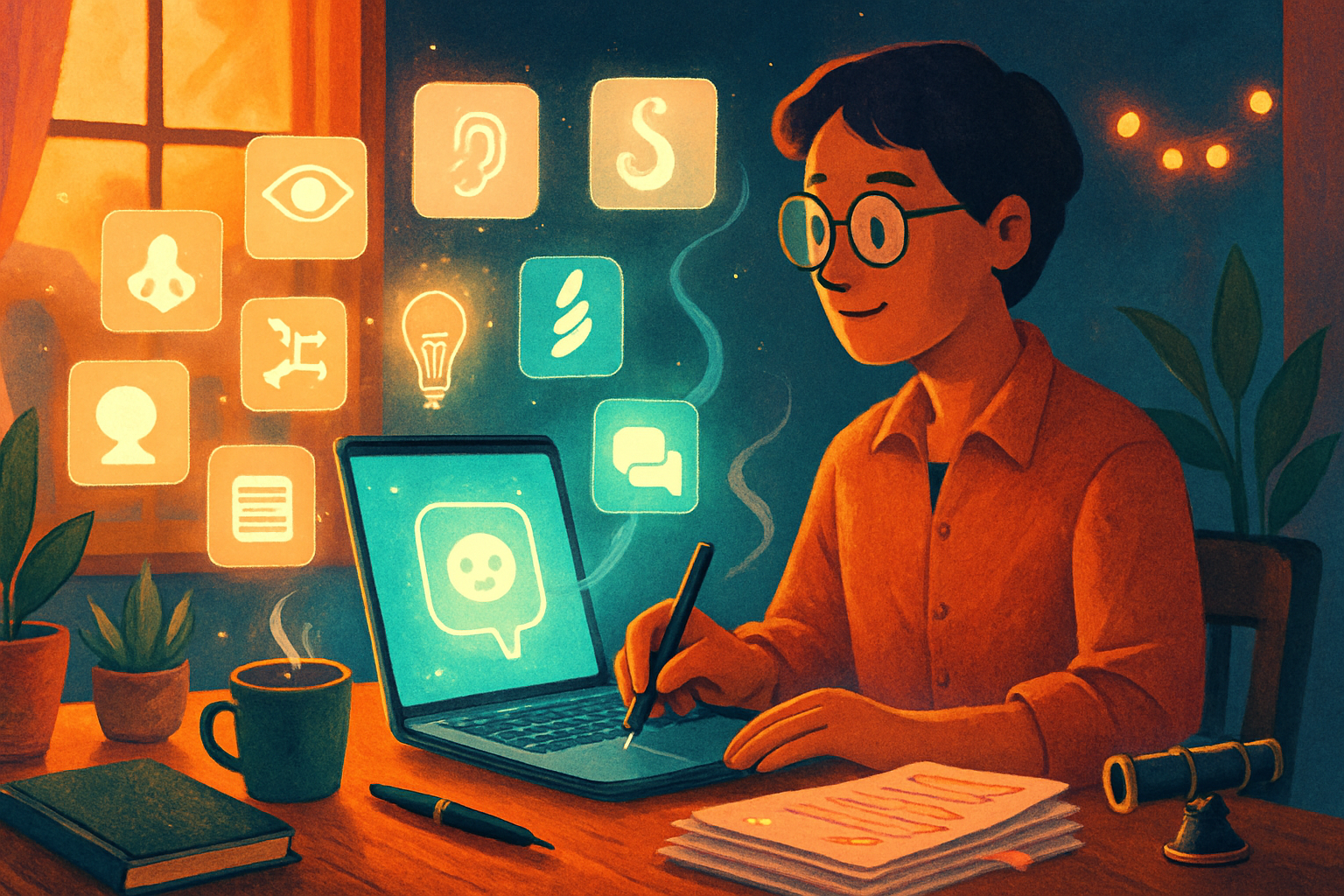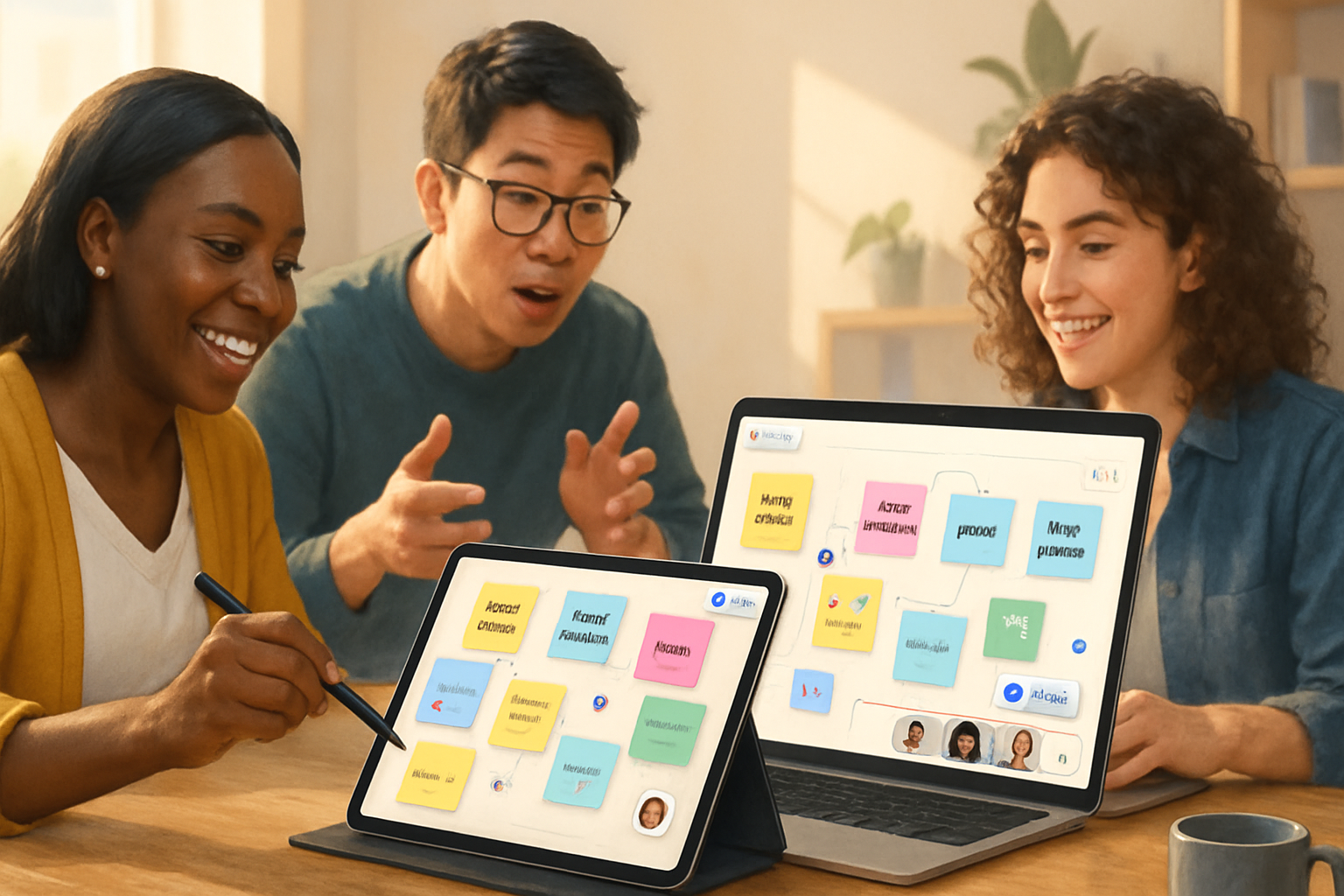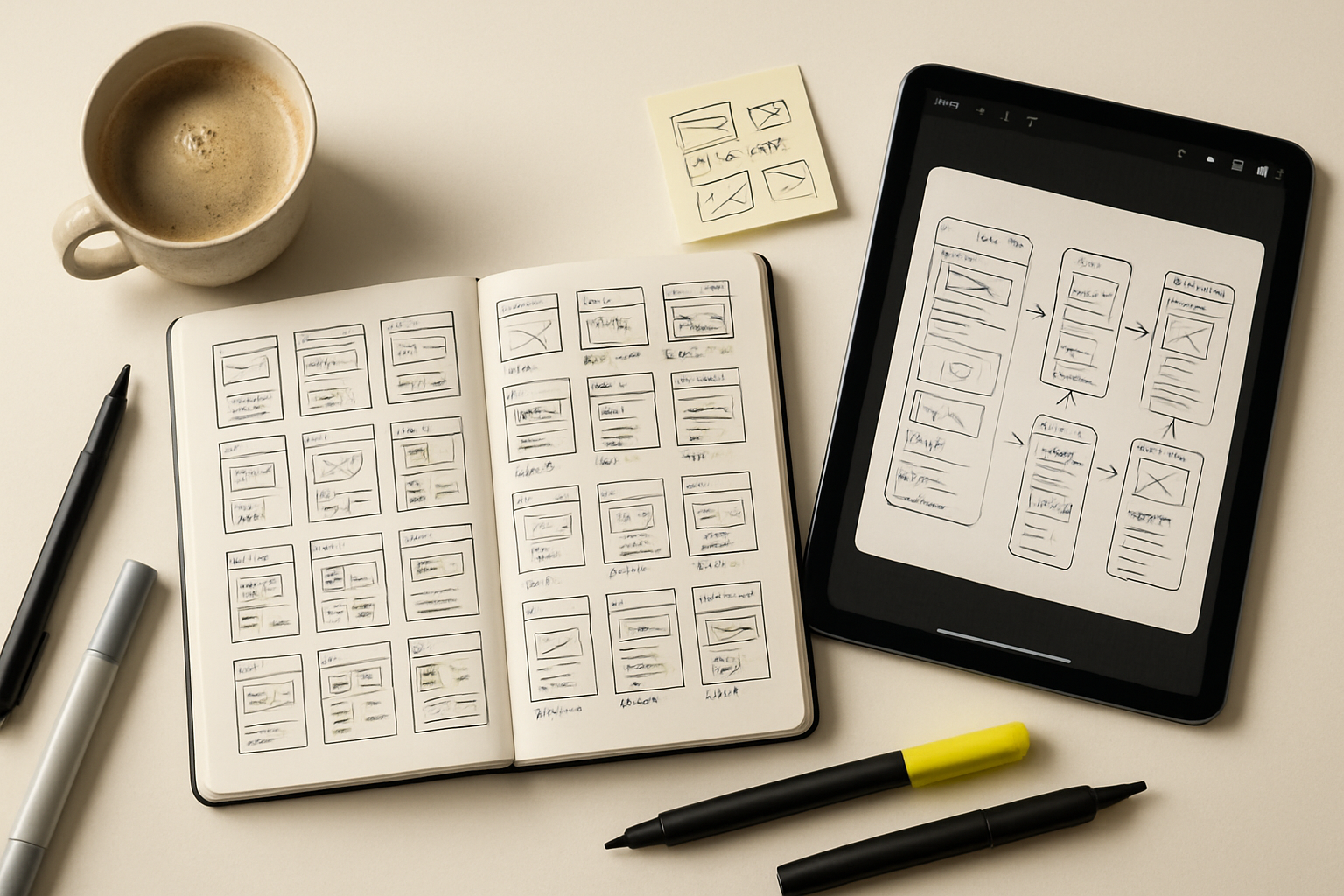· creativity · 6 min read
10 Whimsical Tips to Boost Your Creativity on a Dull Day
Stuck in a creative rut? Discover 10 playful, research-informed and delightfully odd strategies - from playing with color to making a curiosity jar - that will snap your brain out of autopilot and spark fresh ideas, even on the dullest of days.

Why whimsy matters when your day feels dull
We all have days when ideas feel heavy, the to-do list is loud, and your brain runs on autopilot. The good news: creativity isn’t a mystical resource that vanishes - it’s a set of habits, contexts, and tiny rituals you can design. Adding a little whimsy acts like a lubricant for thought: it reduces pressure, encourages risk-taking, and invites surprising associations.
Below are 10 practical, sometimes delightfully weird, tips to jumpstart creative thinking. Each one includes a short explanation and a quick, actionable exercise you can try in 5–20 minutes.
1) Play with color (and change your backdrop)
Color influences mood and cognitive processing. For example, research has found that cool tones like blue support open, creative thinking while warm tones like red can enhance detail-focused tasks (summary on color and cognition).
Try this: switch your desktop wallpaper to a blue or teal gradient, or tape a sheet of colored paper behind your monitor. Spend 10 minutes free-writing an idea with the new backdrop. Notice whether you feel more relaxed or more exploratory.
2) Use a random prompt generator (embrace the absurd)
Unexpected constraints force your brain to connect unrelated dots. Random prompts create those constraints for you - and the more absurd, the better.
Quick generator (copy/paste to test):
const subjects = ['a mailbox', 'an old shoe', 'a houseplant', 'a paperclip'];
const actions = ['whispers', 'organizes', 'dances with', 'betrays'];
const themes = ['time', 'memory', 'joy', 'regret'];
function prompt() {
return `${subjects[Math.floor(Math.random() * subjects.length)]} ${actions[Math.floor(Math.random() * actions.length)]} ${themes[Math.floor(Math.random() * themes.length)]}`;
}
console.log(prompt()); // e.g. "a houseplant dances with regret"Exercise: generate three prompts and write a 3-sentence scene for each. Constraints breed creativity - the odd pairings will nudge new metaphors.
3) Build a ‘‘Curiosity Jar’’ (tiny rituals with big returns)
Make a jar filled with tiny tasks: a single sticky note with a word, a sketch prompt, a photo assignment (“take a picture of something round”), or a challenge (“tell a 2-minute story about this spoon”). Reach in for one prompt whenever your day turns grey.
Rituals reduce decision fatigue - the act of drawing a slip becomes a small signal to your brain: playtime begins.
4) Apply the “5-minute prototype” rule
If the idea is intimidating, give yourself five minutes to create any version of it: a doodle, a voice memo, a quick collage made from scraps. Quick prototypes sidestep perfectionism and produce tangible artifacts you can iterate on.
Exercise: set a timer for 5 minutes and make the ugliest version of your idea. Keep it. Later, the messy draft will contain surprising starting points.
5) Introduce playful constraints
Far from limiting you, constraints spark innovation. Try limiting your palette to two colors, write with your non-dominant hand for 7 minutes, or create a poem without using the letter “e.” Constraint-driven play encourages unusual problem-solving pathways - a technique recommended by creative educators like the Stanford d.school.
Exercise: pick a constraint and stick to it for one short creative sprint (10–20 minutes).
6) Move: short walks, dancing, or silly gestures
Physical movement changes brain chemistry and loosens rigid patterns of thought. A short walk, a 2-minute dance, or imitating a cartoonish gesture can shift your mental state and produce new associations.
Try this: step outside for a 7-minute walk with the sole instruction to notice three shapes that look like letters. When you return, free-write the first idea that comes to mind.
7) Make something with your hands (tactile play)
Working physically - folding paper, arranging objects, molding clay - gives your brain a different feedback loop than typing. Tactile creation favors embodied cognition and often surfaces ideas that purely mental work misses.
Simple exercise: fold an origami boat, rearrange office supplies into a tiny sculpture, or doodle with a thick marker for 10 minutes.
8) Use collaborative randomness: the Exquisite Corpse method
A playful group technique: one person writes a line (or draws a portion), folds the paper to hide it, and passes it on. The result is unpredictable and often hilarious - perfect for kickstarting narrative or visual ideas.
If you’re solo, try a digital version: start a story, paste it into a shared doc, and ask three friends to add one line each without reading what came before.
9) Reframe problems as questions a child might ask
Children ask blunt, imaginative questions: “What if the dog could talk?” This reframing removes professional filters and surfaces wild possibilities. Try asking “Why?” three times or rewriting your brief as if you were explaining it to a 7-year-old.
Exercise: pick a current challenge and write three childlike questions about it. Choose the wildest answer and explore it for 10 minutes.
10) Celebrate tiny failures - create a “failure confetti” ritual
Play reduces fear. Make a small, playful ritual that honors attempts: confetti for bad ideas, a silly hat worn when you try something weird, or a mini-dance when you delete a paragraph. Ritualized failure reduces stakes and makes experimentation fun again.
Try this: each time you intentionally write something half-baked, drop a paper confetti in a jar. At the end of the week, dump the jar and laugh at the pile - it’s proof you tried.
Quick 5-minute creativity boosters (ready-to-use)
- Write down the first sentence that comes to mind about the last object you touched.
- Draw a creature that combines three objects near your desk.
- Use a timer and write a bad headline for the opposite of your problem.
- Swap your music genre for 10 minutes (classical, salsa, chiptune).
- Take a photo of something ordinary from an unusual angle.
A few notes from research and practice
- Constraints and randomness both increase creative output by forcing new associations (see tools used in design schools like the d.school).
- Changing environment, color, and movement influence mood and cognitive flexibility; small physical changes can produce outsized mental shifts (see coverage of color studies).
- Play lowers the perceived cost of experimentation, encouraging risk-taking and iteration (recommended reading - Austin Kleon’s work like
Creativity is less about waiting for inspiration and more about designing conditions where surprise can occur. Pick one (or three) of these playful techniques the next time your day feels dull. Try them as rituals rather than miracles - with small repeated acts of whimsy you’ll build a toolbox that brings ideas back into play.



